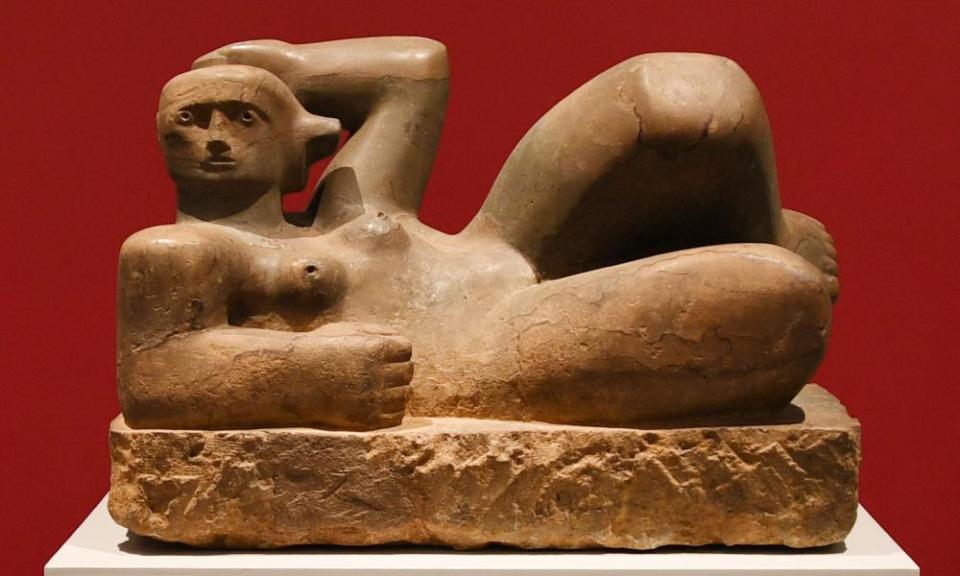Early Henry Moore commission on display as studio revamp opens

One of Henry Moore’s first commissions, a first world war roll of honour board that he carved for his school, has gone on display in an exhibition charting the artist’s early years.
The Henry Moore Foundation will this weekend show off a £7m redevelopment of the artist’s studios and gardens in Hertfordshire by opening an exhibition that explores how Moore went from talented, charismatic schoolboy to being one of the most important sculptors in the world.
The roll of honour board for Castleford secondary school is Moore’s oldest surviving commission. It shows both how skilled he was at a young age and how important one teacher was to his development as an artist.
“It was commissioned by his art teacher Miss Alice Gostick who was a very important figure in those early years,” said the curator Sebastiano Barassi. “She was the person who really supported him and encouraged him to explore his interest in art.”
Not only did Gostick teach Moore at school but she organised Sunday afternoon teas for the discussion of contemporary art, showing her wide-eyed pupils magazines with the latest developments in the avant garde. She also organised extra-curricular pottery classes and continued to encourage Moore after he left.
That encouragement included commissioning the roll of honour board that lists 91 of the school’s pupils who fought in the war, including one HS Moore and his regiment CSR – Civil Service Rifles.
“It was made when he was 17 and is a very accomplished piece of carving for someone that young,” said Barassi.
Gostick was far from the only person who went out of their way to help the young, charismatic and obviously gifted Moore. There was a generosity of spirit from teachers, fellow artists and collectors who showed him works he would never otherwise have seen. All of which rubbed off on Moore and is one reason for the Henry Moore Foundation, which he created and this year celebrates its 40th year.

The foundation’s director, Godfrey Worsdale, said: “One thing you will see in spades in the exhibition is all the people who gave Moore a leg up, gave him a window on to an exciting world … Things happened for Henry Moore that enabled him to become the artist he became and I think he felt very fortunate through those experiences and wanted to pay them back.”
One of the foundation’s roles is to distribute money to subsequent generations of artists, with an estimated 2,000 grants totalling more than £34m given out over the last four decades.
Worsdale said Moore was Britain’s first international artist, his work displayed in galleries and public spaces in hundreds of cities across the world.
The foundation also exists to protect his home, studios, gardens and archive in the tiny hamlet of Perry Green, Hertfordshire. A new visitors centre and archive building are the most obvious elements of the £7m redevelopment.
In a quiet year Perry Green gets around 16,000 visitors a year, whereas a busy year will be 35,000. With the redevelopment they now hope to get that higher visitor figure every year.
• Becoming Henry Moore is at the Henry Moore Studios and Gardens, SG10 3EE, from 14 April to 22 October.

 Yahoo News
Yahoo News 